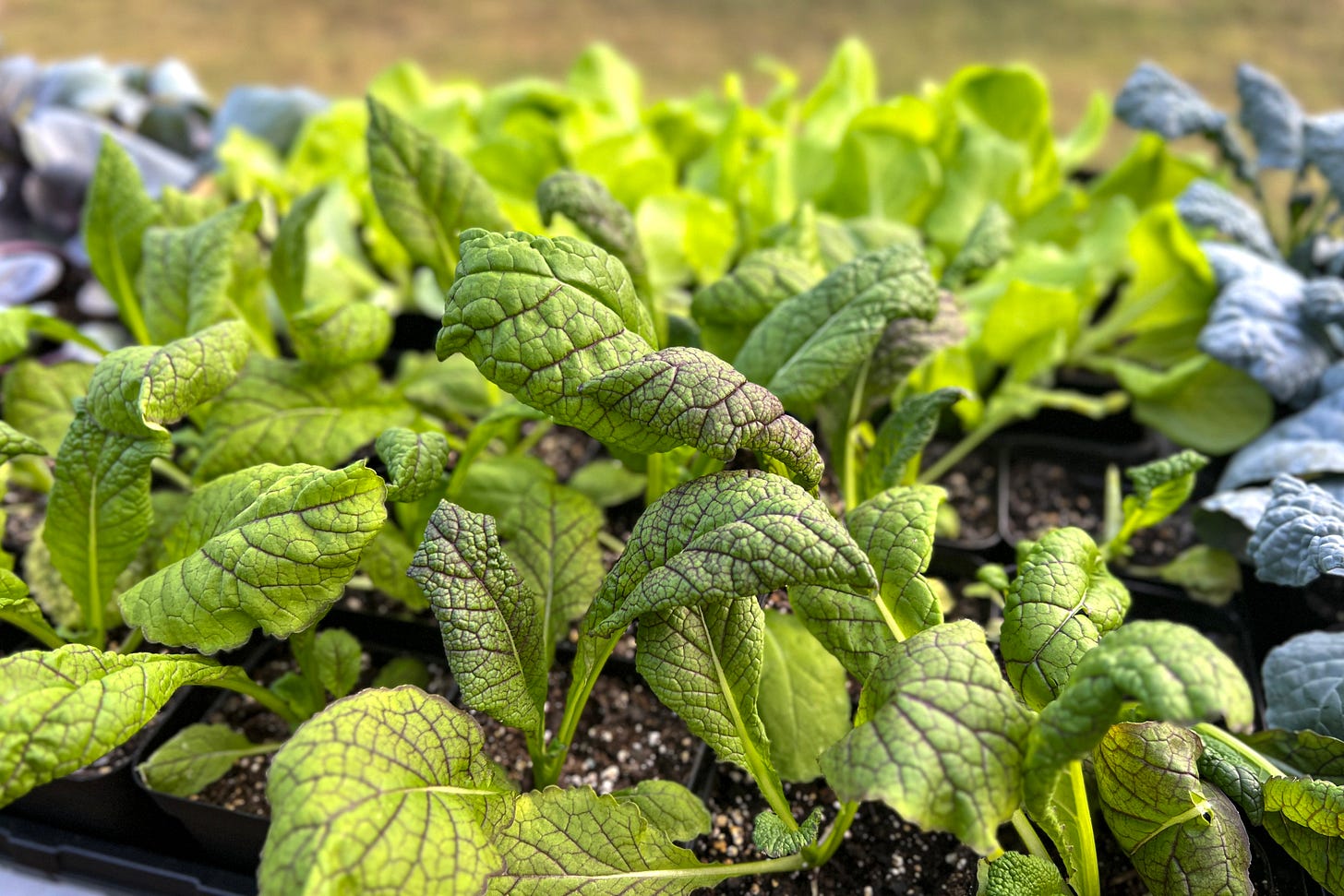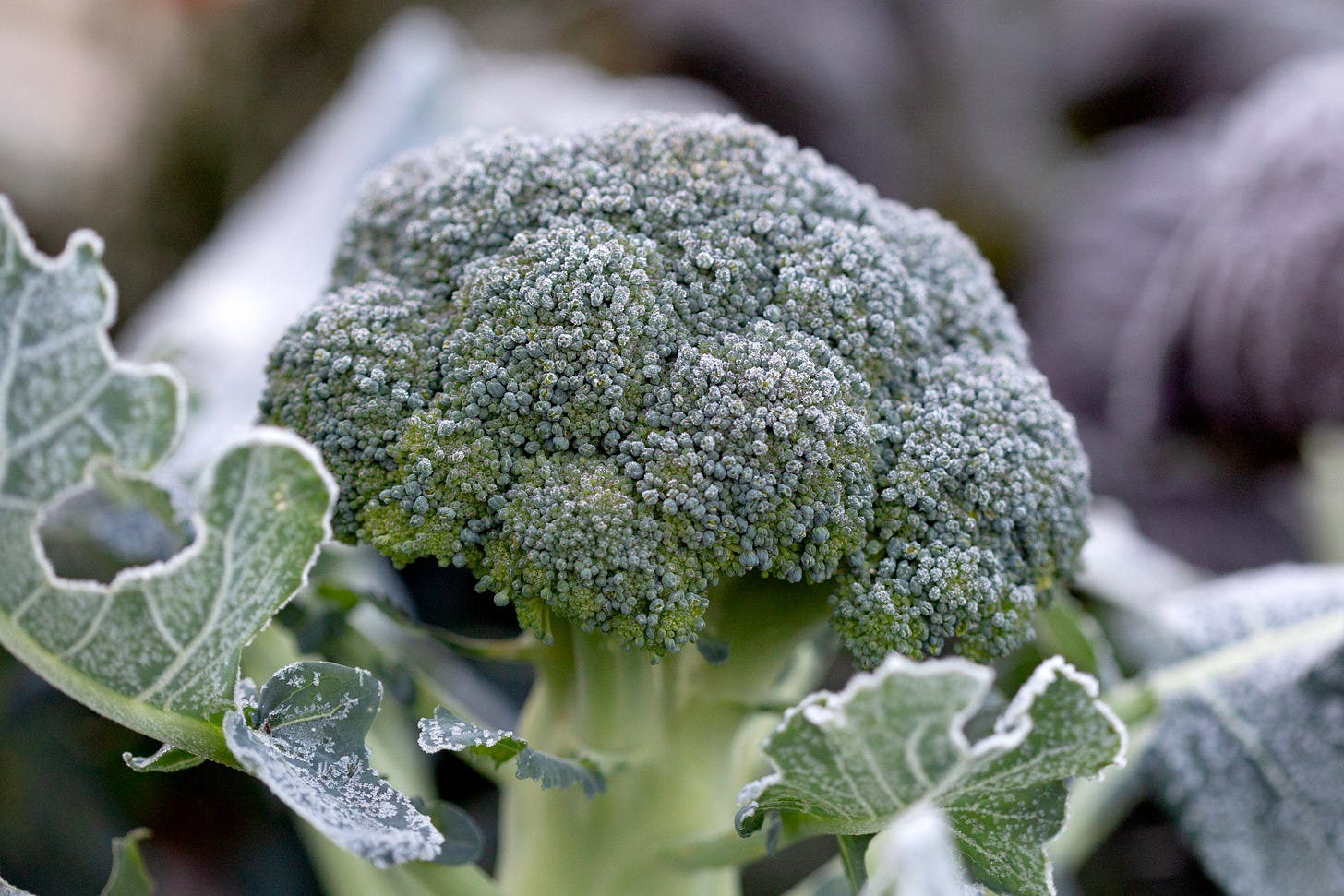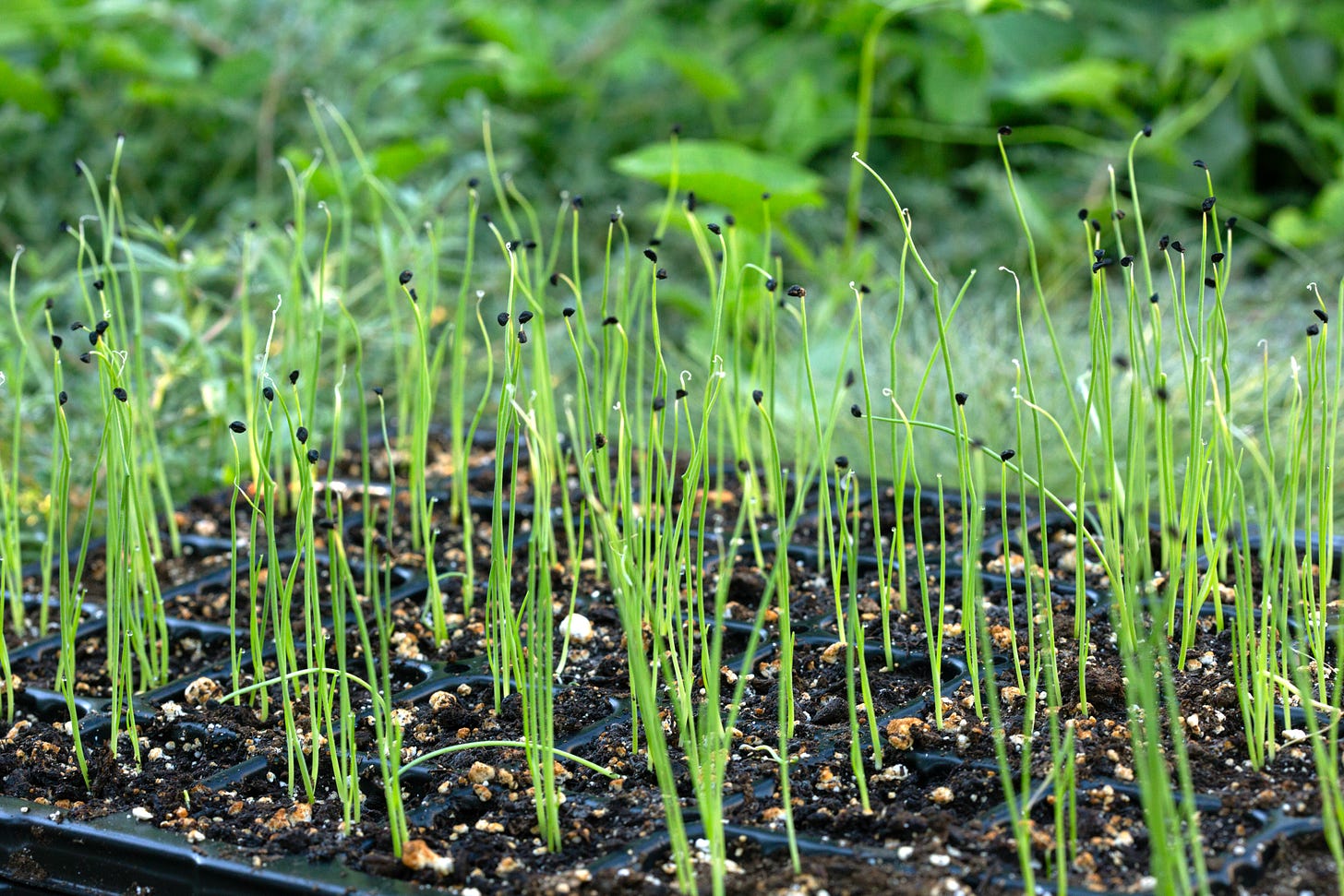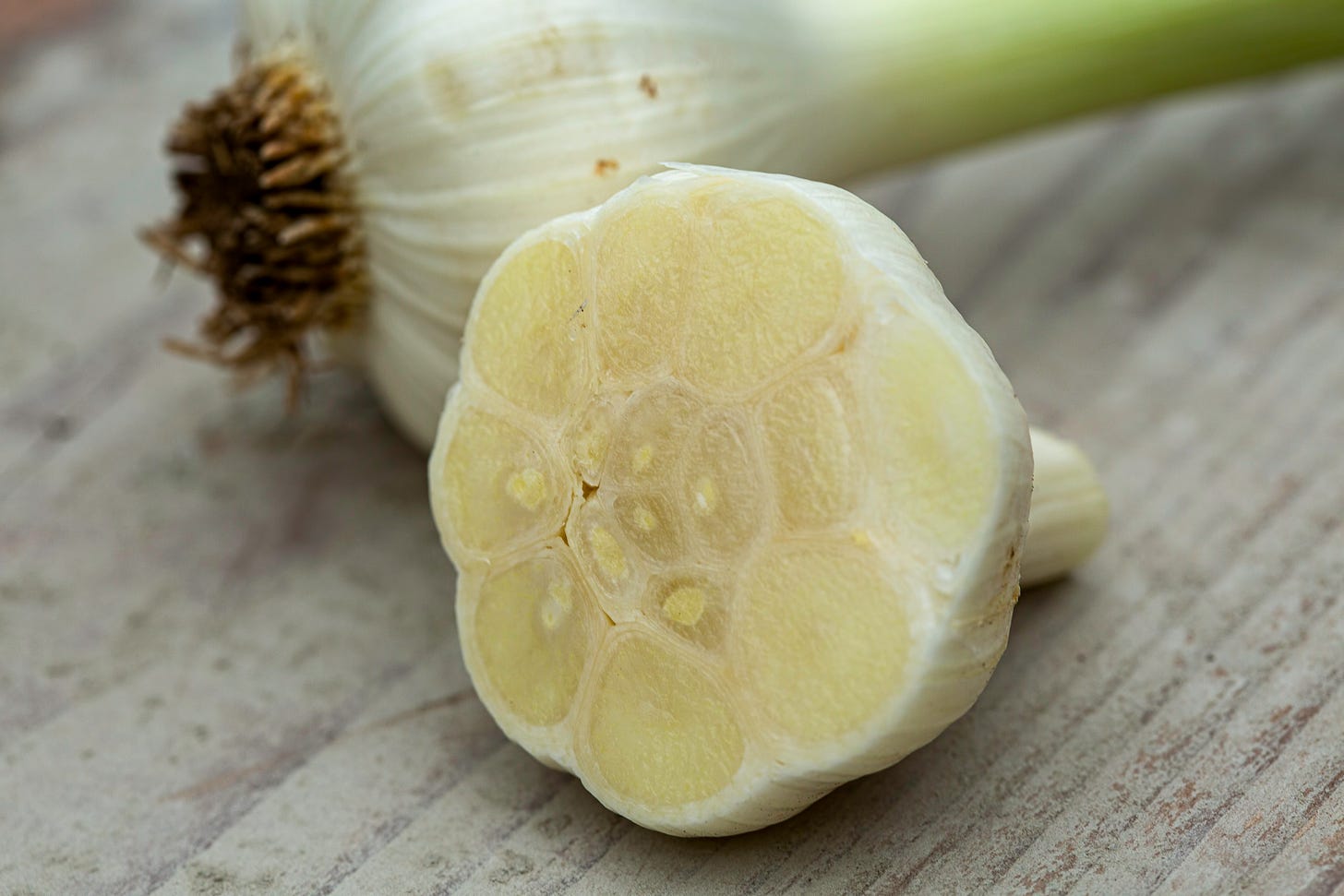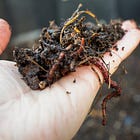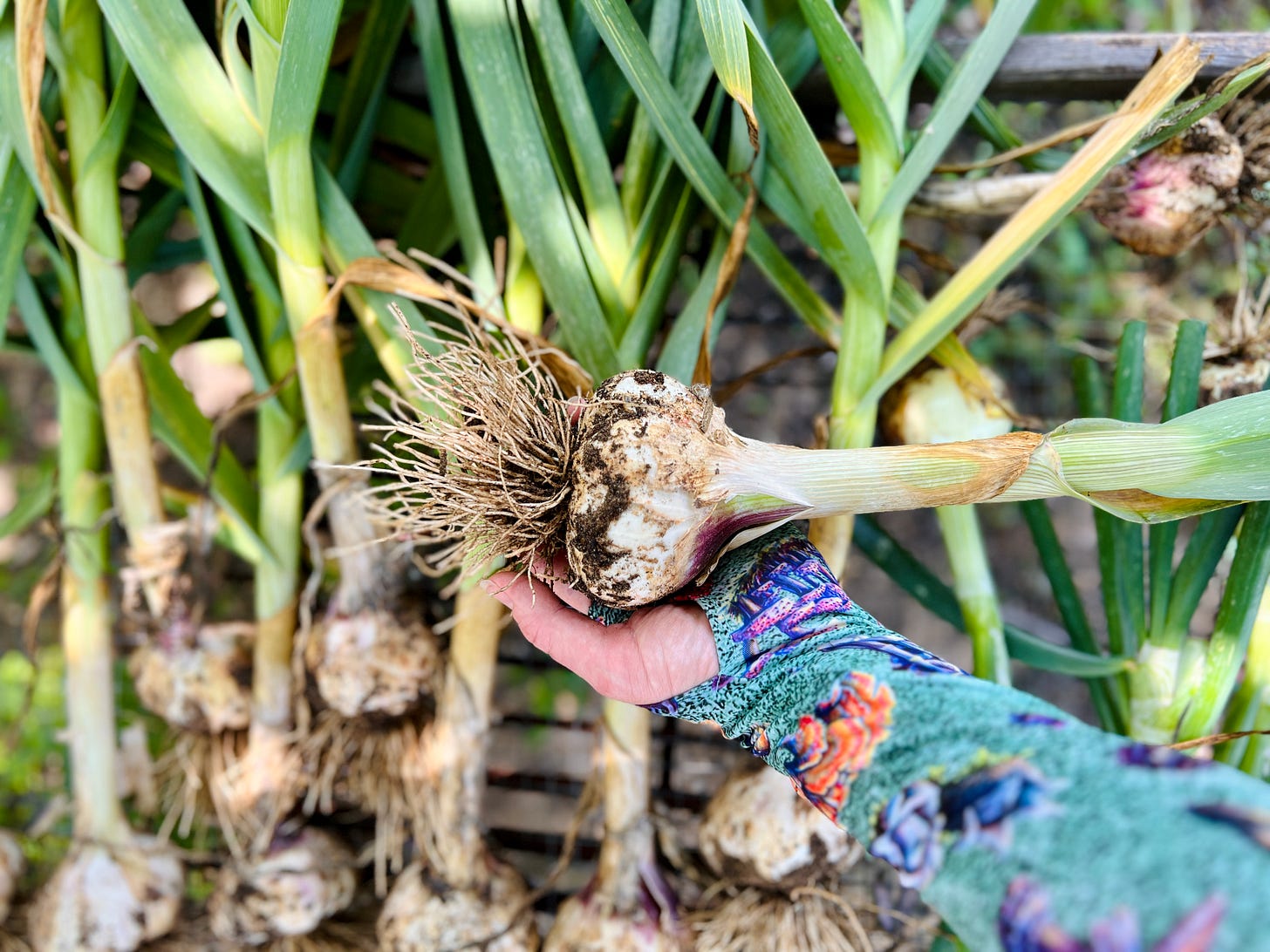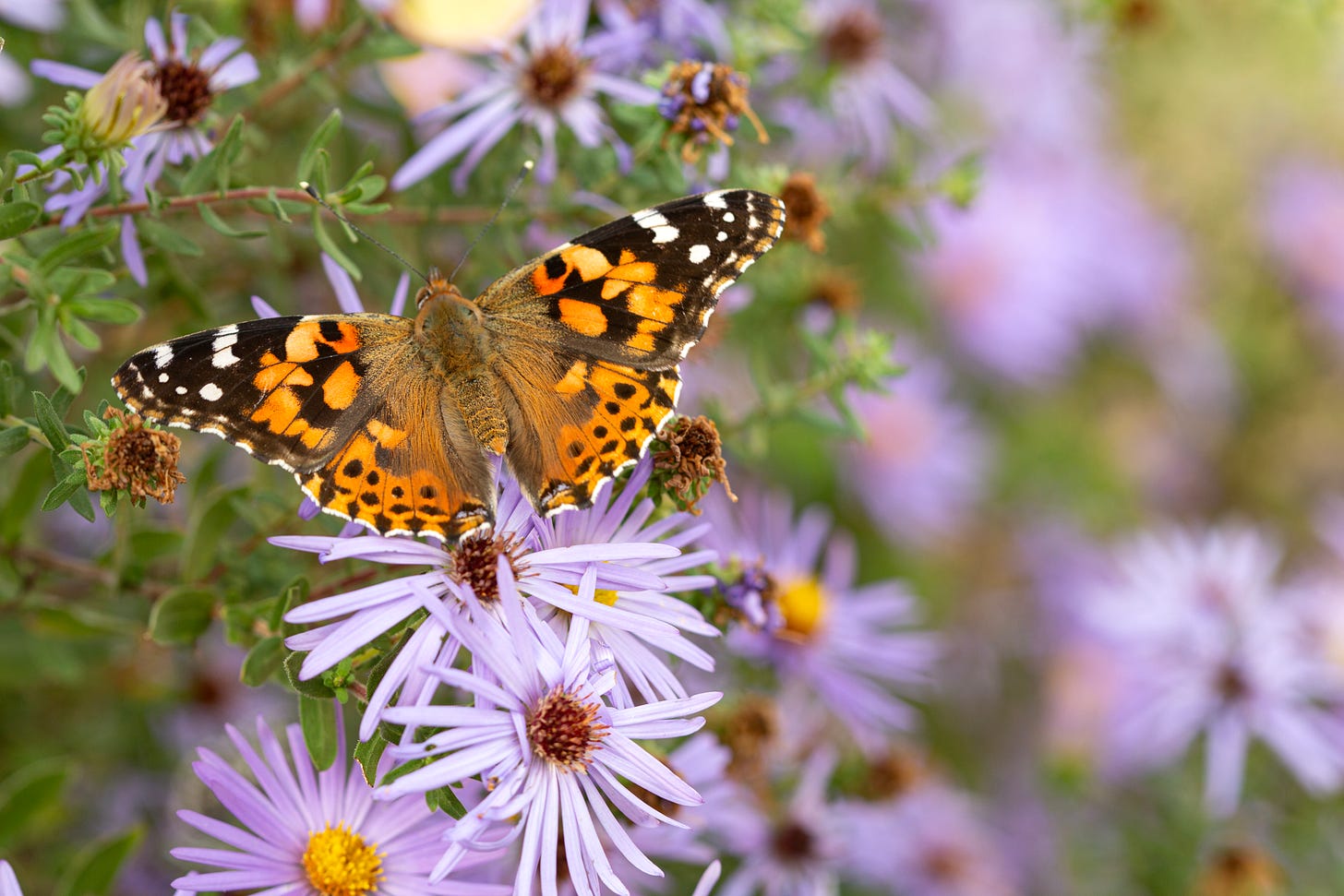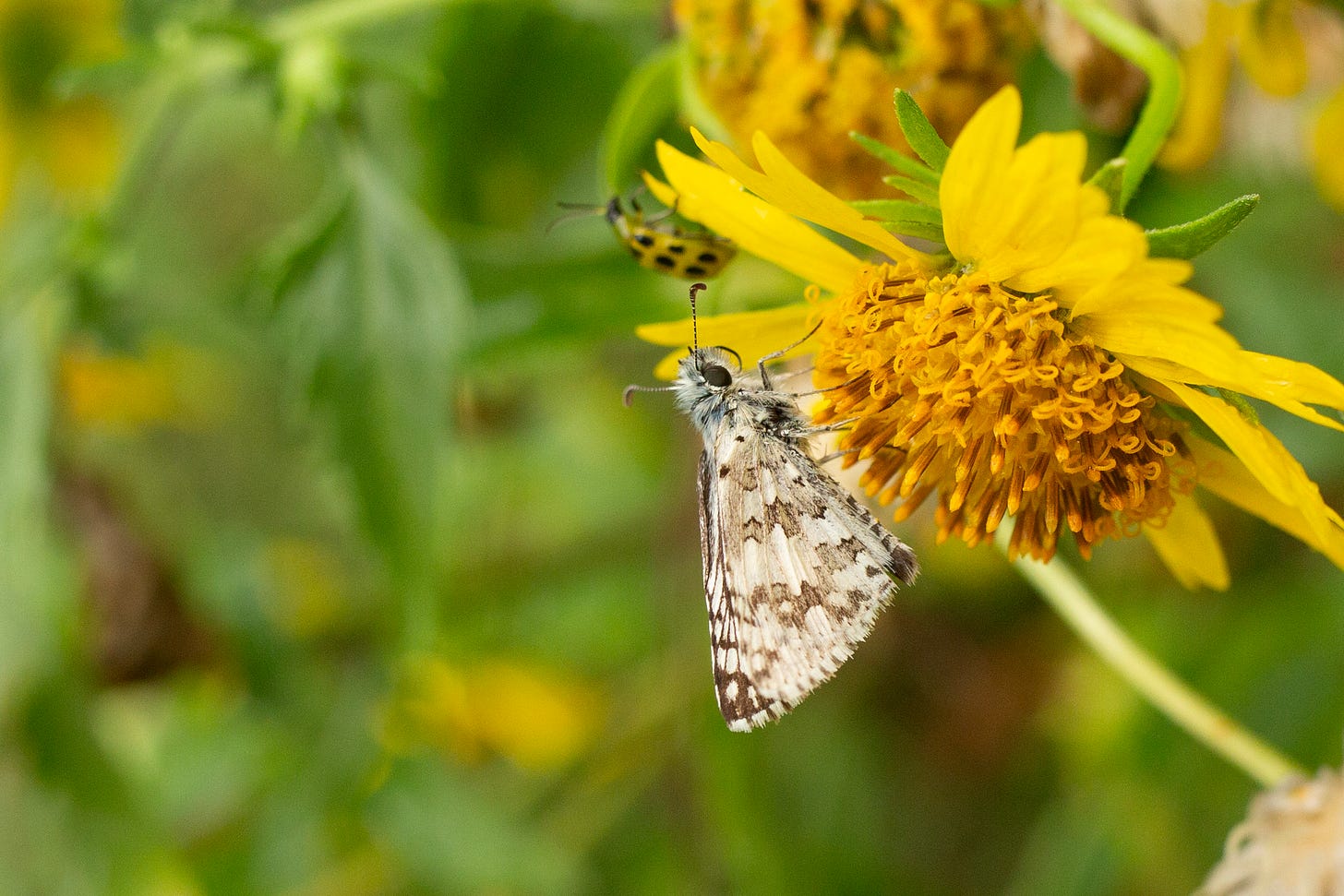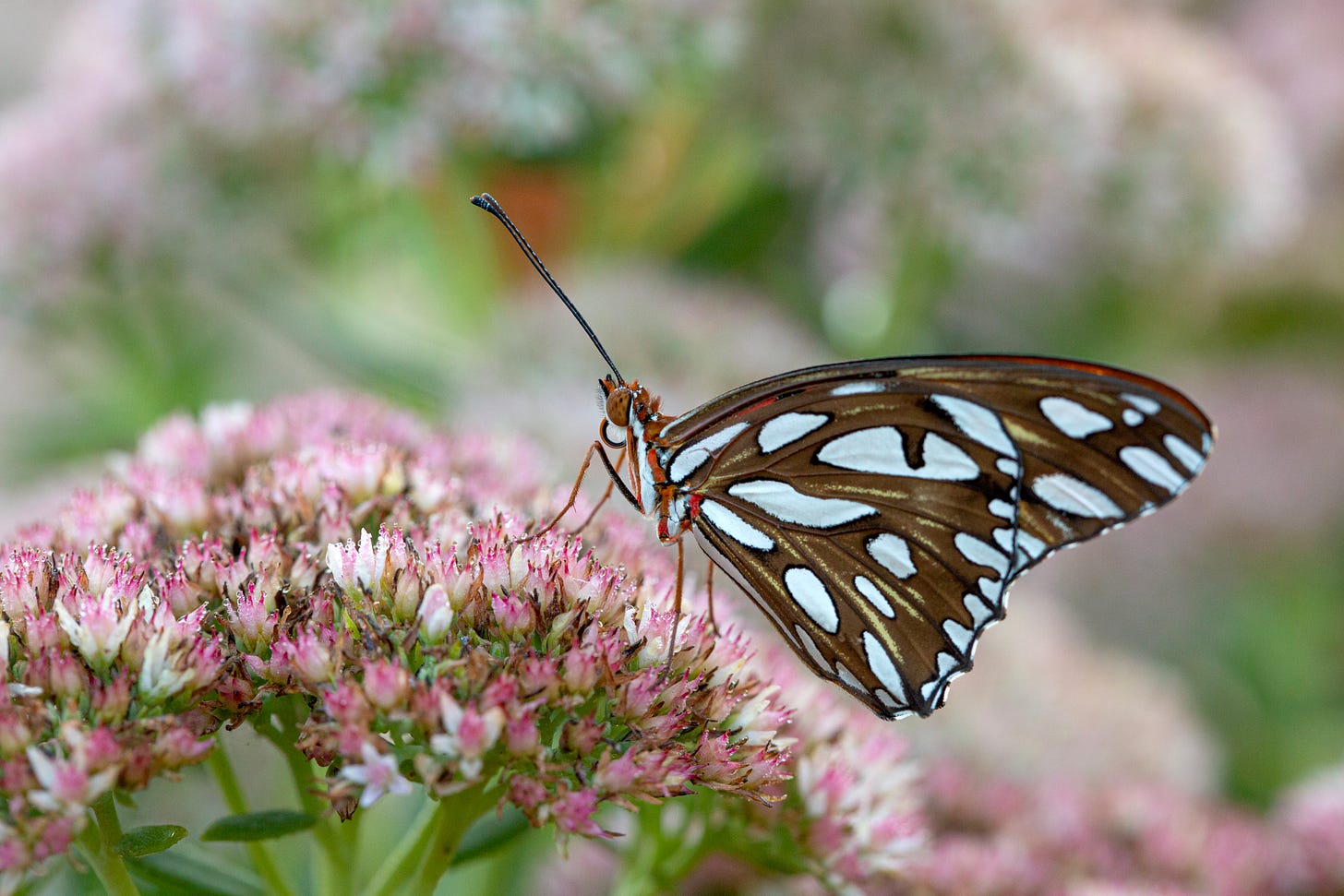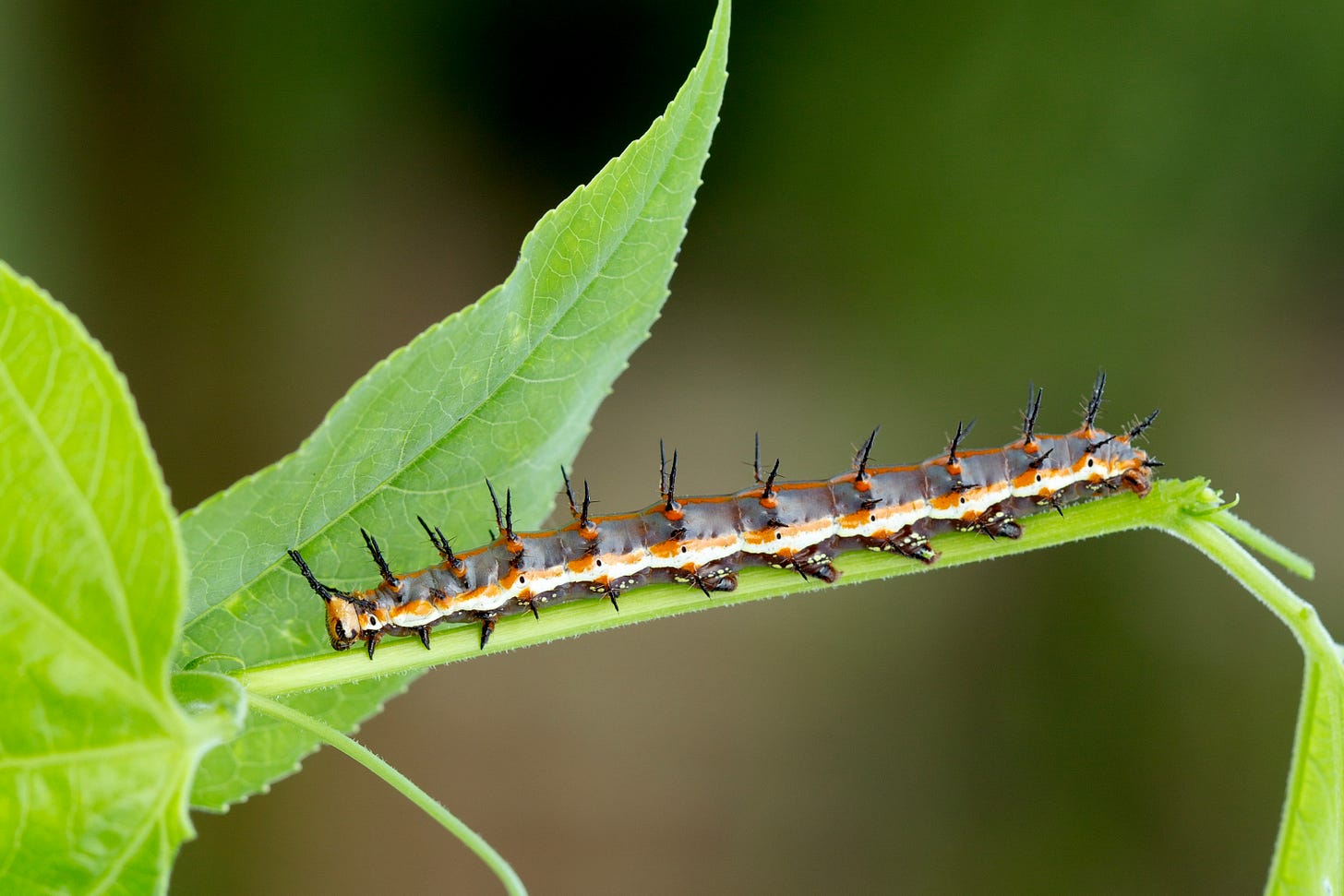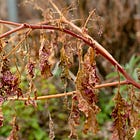Getting Ready for the Fall Garden
At the height of the summer harvest, it's time to start planning for fall
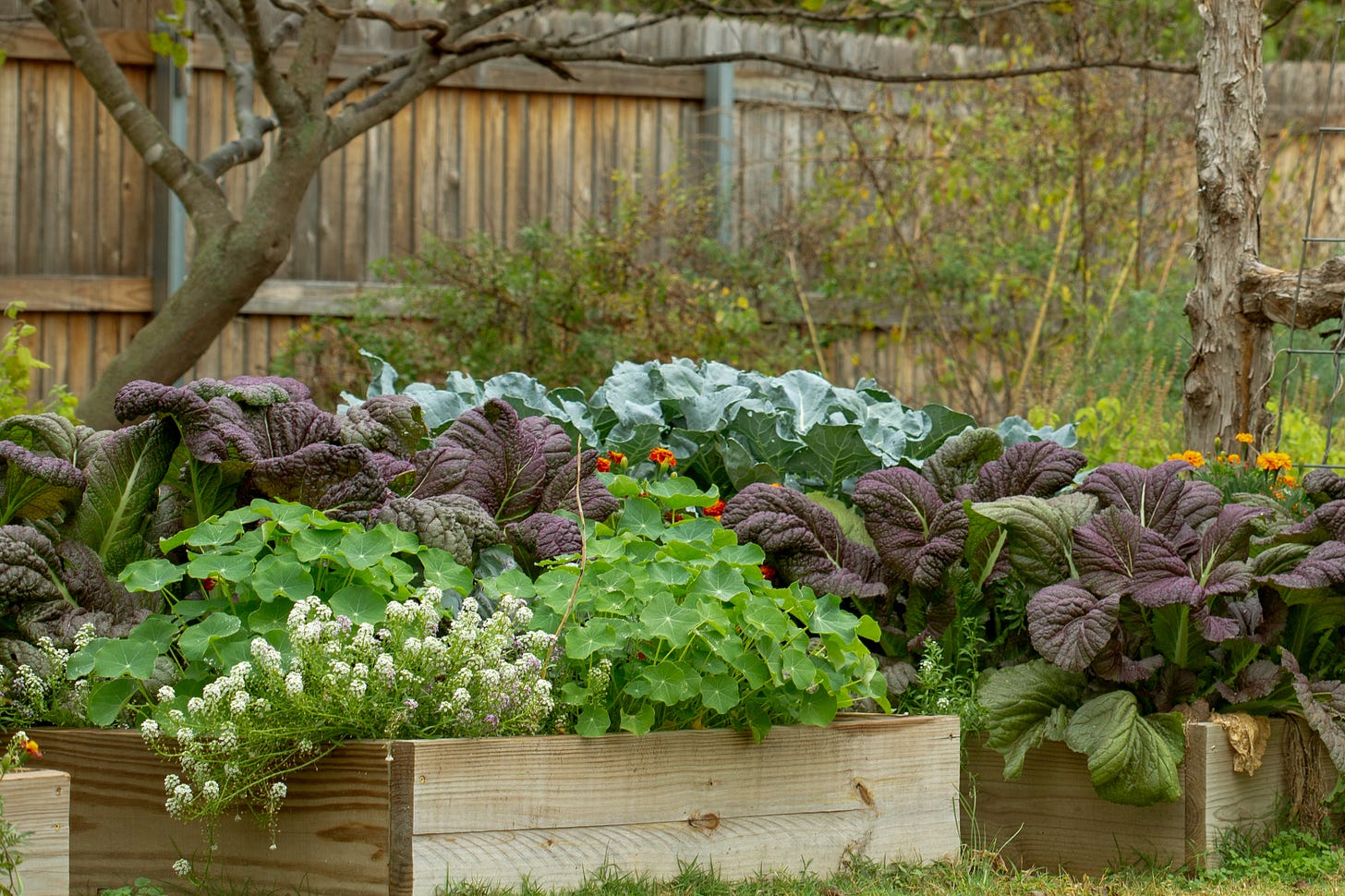
Summer is passing quickly! That means the garden will soon be winding down, or at the very least, it’ll be way too hot and humid to care much. This time of year, gardeners tend to fall into one of two camps: overwhelmed and ready for a break or
let’s go, I’m ready for round two!
If you're in the second group, you’re in good company. Fall gardening has become my favorite. Cooler days are ahead (eventually), pest pressure lessens, and those cool-season crops we loved in spring get to come back for round two. But having a fall garden means planting in the heat of summer to give crops time to mature for harvest.
What I’m Starting Now From Seed
I’m in USDA Hardiness Zone 7b (recently reclassified from 7a to reflect the increased average minimum temperature of winter). For my climate and area, there are several crops that need to be started from seed now to give them time to mature before the arrival of freezing temperatures, snow and ice, and shorter days with less sunshine.
The Old Farmer’s Almanac’s planting calendar is a great resource that I use every season for plant timing. I just plug in my zip code here and look for the list of fall crops. I try to start within a day or two of their suggested timeframe. Their planting calendar tool provides planting dates based on your first frost as well as dates to plant by the moon. It also tells you average days to crop maturity and whether or not the crop is frost-hardy or frost-tolerant . Many cool-season crops fall into one of these two categories and even taste better after a frost. Some fall edibles like peas and green beans, however, can be tender to the frost, and The Almanac gives you that information too.
Armed with this information, yesterday I started broccoli and cauliflower - a few days later than I had planned - from seed, along with a few flowers. I also sowed some pansies, and I’m giving marigolds another try. My spring marigolds got chewed down by rabbits before they could bloom, but last fall I had some of the best marigolds I’ve ever grown and I started them from seed in August, so I’m giving them even more of a head start this year.

Nasturtiums are going in again in a week or so too. The ones I planted in spring have continued to spill beautifully out of beds, whisky barrels, and pots, but the summer heat and humidity takes its toll on them. I am ready to start with a fresh new batch because they perform so well in the cool of fall. I love how not only their blooms are gorgeous but their foliage is stunning too.
Soon, I’ll be priming spinach seed, sowing flats of onions to plant out in fall, starting giant red mustard seed (which gives the garden that amazing purple glow), and direct sowing turnips, by special request from my husband. Some years I also grow cabbage and kale but I think this year I am too tired to fight off the cabbage worms.
Need ideas for what to grow?
I’ve got a handy article on cool-season crops that are easy to start from seed. In that guide I also talk about how I prepare the soil for fall plantings and at least try to protect the young seedlings from heat and pests like cabbage loopers and cabbage worms.
Read more here: Fall Crops You Can Start from Seed
And to help gardeners get ahead of the game, over at joegardener® we are hosting an online Fall Vegetable Gardening Masterclass on Wednesday, July 30th at 12 PM Eastern. It’s packed with information on growing vegetables after the summer season dies down and how to get started now.
It’s Time to Order Garlic
Garlic planting happens in October around here, so now’s the time to order seed garlic before the best varieties sell out. The companies will let you pre-order and then ship it to you when it’s time to plant in your region. I always try to save some of my biggest, healthiest cloves from the previous harvest, but I also like to try something new each season.
There are two main types of garlic to choose from:
Hardneck varieties usually do better in colder climates and produce a flower stalk called a scape, which is edible and delicious. They tend to have a richer flavor but a shorter storage life.
Softneck garlic grows well here in Oklahoma and stores longer—perfect if you’re growing to keep it on hand through winter. These are the ones you often see braided.
If you're growing garlic for the first time, start small. Just a few bulbs can yield a satisfying harvest by next June. I’ll be planting mine in a sunny raised bed with a fresh top dressing of my homemade compost and some a natural mulch cover like straw or fall leaves to insulate over winter.
My favorite sources to order garlic for planting are Keene Garlic and Filaree Farm.
Fall Butterflies Are Coming
Right now, only a few butterflies have shown up. I’ve been seeing a lot of pipevine swallowtails this summer, which is great because if they are females ready to lay eggs, I planted wooly dutch pipevine for them.
Mostly, they’ve just been interested in the zinnias and the tithonia. Once the sedum and asters start blooming in full force, we’ll see clouds of butterflies all over the garden.
One of my favorites in fall is the skipper—a tiny, charming butterfly that’s often mistaken for a moth. I’ve seen a few this summer but there will be so many more in all varieties in a few months. They’re not very skittish, which means I can get lots of photos of them. I wrote about skippers and shared a bunch of photos here:
Skippers: A Charming Moth-Like Butterfly
Another fall favorite: the Gulf fritillary. I started passionflower vine from seed last fall, and it’s now thriving in the garden. That vine is the host plant for Gulf fritillary caterpillars and I check every day to see if there’s eggs or young cats. Those butterflies seem to show up closer to fall though. The adults love to get nectar from the fall blooms and then they lay their eggs on the passion vine. If you want to grow passionflower vine yourself, I put together a guide on how to start it from seed (with tips from my own experience):
How to Grow Passionflower from Seed
And of course, there’s the Monarch butterfly. The early waves of migration usually arrive here in late August or early September. If you’re in the migration path and you’ve got milkweed in your garden and a few flower blooms still going, you may get to witness the magic of nectaring adults and plenty of caterpillars in the milkweed patch.
A Different Kind of Garden Magic
Last fall’s garden was one of my favorites ever and motivated me to hit reset every July and start seeds again. After saying goodbye to the warm-weather crops like tomatoes and cucumbers, the garden took on a whole new rhythm from September through November and even into December for some crops.
Cool-season vegetables like mustard greens, spinach, and turnips settle in and matured more slowly as the days grow shorter. The cold didn't harm them. In fact, it made them better and we were still eating from the garden well into winter when we had to actually bundle up to go out and harvest.
I also love how the light softens and the color palette changes. Pollinators that I haven’t seen in a year return to late blooms; it’s one of my favorite times to get my camera out. Growing food in fall also just feels more manageable and more enjoyable. There’s a vibe that only the fall garden brings. Right now I am still harvesting and freezing tomatoes, making pickles with home grown cucumbers - still in the height of the summer madness but I’m already looking forward to watching the fall garden come to life again.



